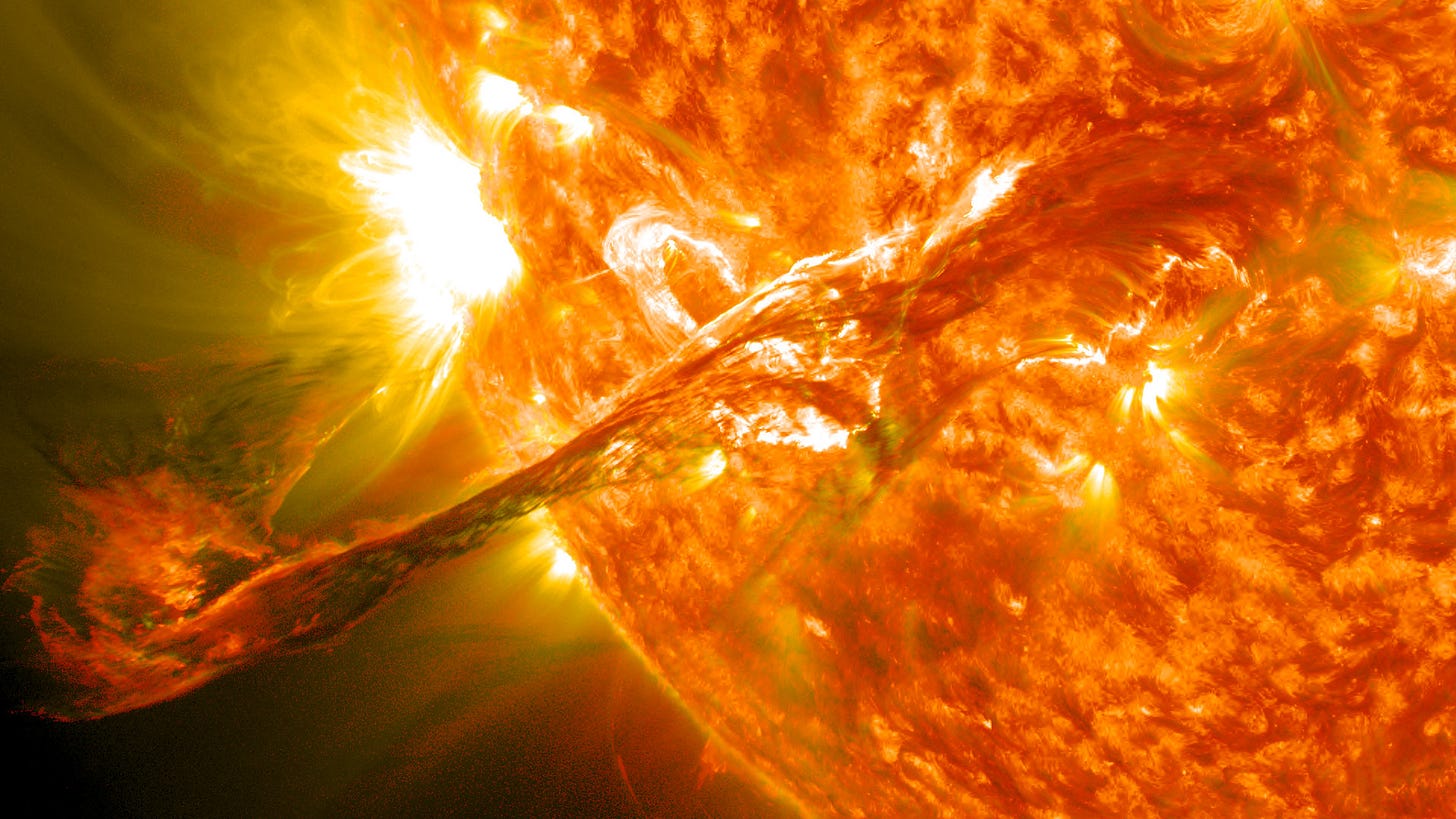In this week's podcast episode of Astronomy News with The Cosmic Companion, we look at new findings concerning the physics of stars, and we look in on a newly-discovered exoplanet where it rains iron. Next, we will examine a new method of learning about massive ribbons of galaxies by examining humble slime molds. Finally, a group of researchers believe they may have found a method by which the intense heat of Mercury could help form ice on the innermost planet in the Solar System.
We also interview Dr. Emily Levesque of the University of Washington. She is one of the lead researchers on the study examining the possibility that a massive cloud of dust surrounding Betelgeuse may be responsible for dimming seen around that star at the end of 2019.

Phenomenon seen on the surface of stars may be explained by new findings about the behavior of plasma beneath their luminous shells. Image credit: NASA/GSFC
The behavior of plasma in stars, including the Sun, is still largely a mystery, despite hundreds of years of study. One question perplexing astronomers is how much the movement of plasma in stars is affected by currents rising up from beneath, compared to the effects of rotation of the star. A new study of a diverse group of more than 200 stars shows convection, like the bubbles of boiling water, plays a far greater role than rotation in shaping stellar activity.
Astronomers recently discovered a distant exoplanet called WASP-76B, continually scorched by its local star on one hemisphere, while the other half of the world is pelted with iron rain. Metals are vaporized on the hot side of the planet, and these vapors are transported to the other side of the planet, where it condenses before falling as a metallic rain. This world, 390 light-years from Earth, was discovered with the ESPRESSO instrument connected to the European Space Observatory’s Very Large Telescope.
Researchers at the University of California Santa Cruz have recently modeled massive ribbons between galaxies using a common slime mold. Networks created between the unicellular members of Physarum polycephalum are similar to massive ribbons of gas which tie strings of galaxies together over hundreds of millions of light years. In an earlier experiment, researchers placed food in positions reminiscent of cities around Tokyo, and the slime mold grew into a pattern similar to the Japanese railway system.|
Mercury is the closest planet to the Sun, and temperatures on that world can run hotter than an oven. But, a new study from Georgia Tech suggests this intense heat could help form ice. As protons stream out of the Sun, some are drawn to the surface of Mercury by the weak magnetic field of that world. These particles may hit hydroxyls, molecules of one atom each of hydrogen and oxygen, forming water. Intense heating from the Sun can then drive these molecules off the surface, and some of these land in craters that never see light, creating deposits of water ice which persevere despite scorching temperatures.
Watch the video version of this episode (full interview in podcast only):
On next week's podcast episode of Astronomy News with the Cosmic Companion, I interview Alan Adler, Inventor of Aerobie flying discs, and the Aeropress coffee maker. (Watch his interview on Good Morning America).
We are happy to say that Listen Notes has selected Astronomy News with The Cosmic Companion as one of their top 50 astronomy podcasts, and the show has been named one of the top 15 astronomy podcasts to listen to in 2020 by the editors of Feedspot.
If you enjoyed this episode of The Cosmic Companion, please download and share the episode on YouTube or any major podcast provider. For more details on space and astronomy news, please visit thecosmiccompanion.net.





















Astronomy News with The Cosmic Companion Podcast March 17, 2020